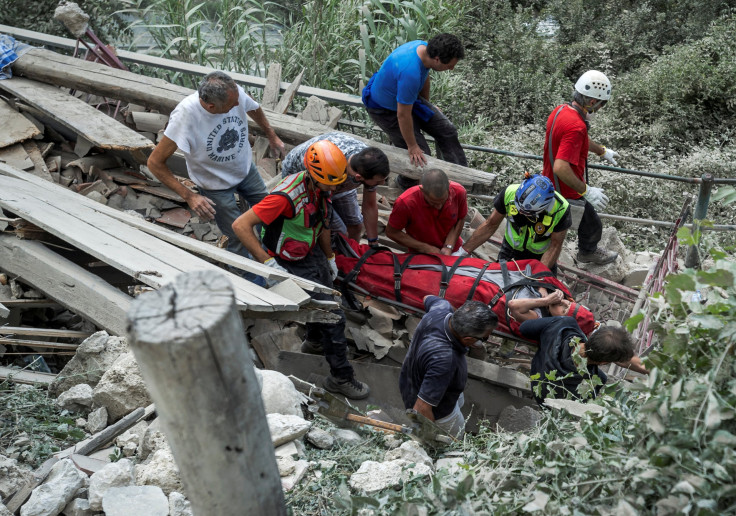Italy Earthquake 2016: How To Survive In The Rubble

Early Wednesday morning, a 6.2 magnitude earthquake hit central Italy, with 73 people so far confirmed dead as a result of the quake. At least a thousand more are displaced, and rescue workers are desperately searching for survivors underneath the rubble. There’s hope still, as some individuals have been able to survive impressive amounts of time trapped beneath tons of debris. Here’s what you need to know if you ever find yourself in an earthquake and need to act quickly to protect yourself and your loved ones.
Take Cover
If you are indoors during an earthquake, stay there, advises Geology.com. Instead of rushing outdoors, seek safety within your home and “duck and cover” by taking shelter under a strong desk or table and holding on until the shaking ends. Try and avoid being near windows, hanging objects, or heavy furniture to prevent injury from falling objects.
According to Time, the “duck and cover” method is recommended for surviving earthquakes in more developed countries because improved building construction has greatly reduced the risk of structures collapsing. However, in the event of an earthquake in a developing country, such as the tragic 2010 earthquake in Haiti, experts recommend the “triangle of life” technique. This involves lying down in a fetal position not under but next to furniture; as roofs and walls collapse atop those sofas and desks, buffer spaces are created that protect people from being crushed.
If you are outdoors during an earthquake, try and quickly seek shelter away from buildings and powerlines and rather move to an area where falling objects are least likely to strike you.
If you are driving when an earthquake strikes, slowly ease your car to the side of the road and stay inside until the quake subsides. Turn off the car and use its emergency flasher lights and keep the parking brake engaged. Try to avoid stopping underneath a bridge, overpass, or under power lines or large signs.
Beneath The Rubble
Of course, no matter how well prepared or trained you are in earthquake safety, there is always a chance you may become buried underneath the rubble. According to experts, when trapped, it's most important to have a source of oxygen from the outside, and, if possible, a water supply. Still, even if the individual has all these components and they end up being found in time, there is still a risk of them dying from something known as “crush syndrome.” This occurs when pressure on crushed dead tissue is eventually lifted, releasing toxins into the body.
"It causes renal damage and shock, people are in agony with the pain and have a high risk of developing renal failure if [they] don't get urgent medical care,"Dr Tejsrhi Shah of Medecins Sans Frontieres told The BBC.
Interestingly, just as in plane crashes, babies and small children are most likely to survive being trapped underneath rubble following an earthquake. This is because babies' bodies are made up of more water than adults, which acts as a natural buffer against dehydration.
Still, there's always hope, and people have survived underneath rubble for astonishing amounts of time. For example, in May 2013, a woman was pulled from the ruins of a factory building in Bangladesh 17 days after it had collapsed. Even more impressive, in 2005 a woman in Pakistani-administered Kashmir survived in what had been her kitchen for more than two months after an earthquake, the BBC reported.
Read More:
How To Survive A Crash Landing And Other Safety Tips For Frequent Flyers From British Airways: Read Here
Zika, Dengue Fever Pose 'Immediate Threat' In Quake-Hit Ecuador: Read Here



























